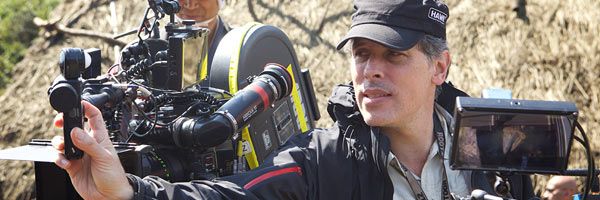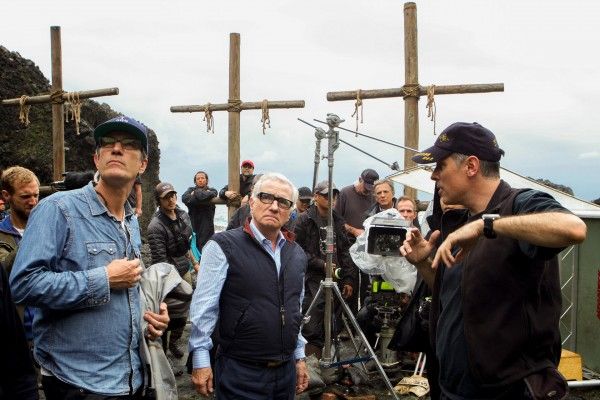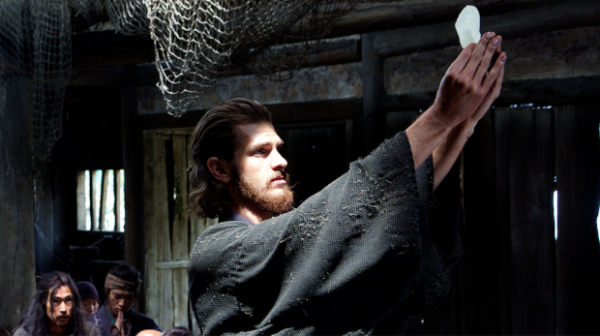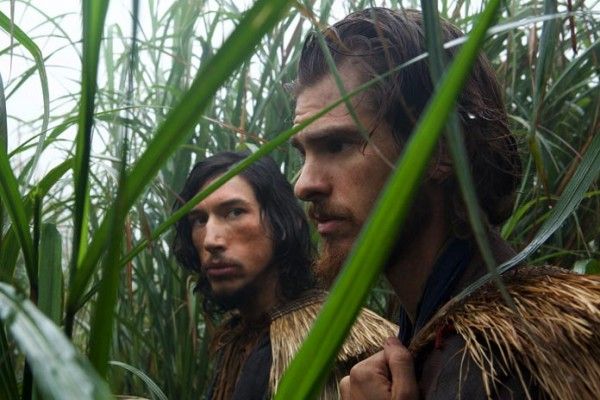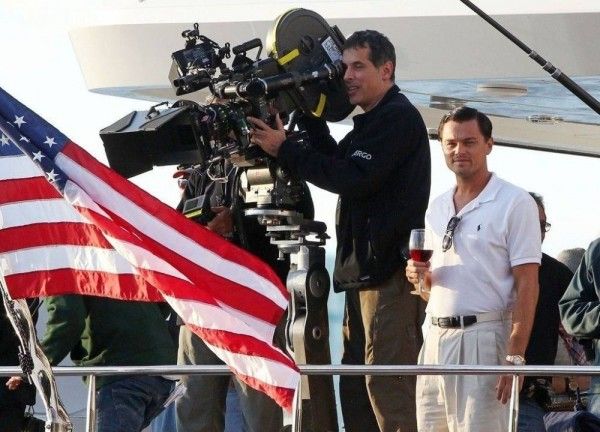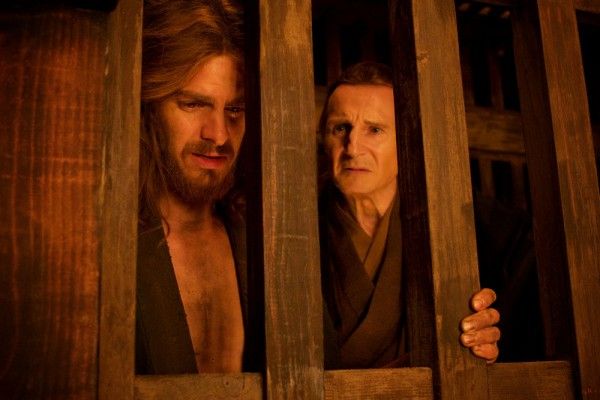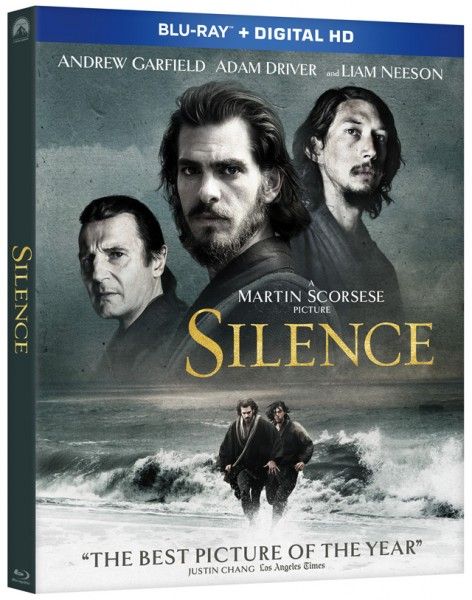Martin Scorsese is one of the most accomplished, knowledgeable, and talented filmmakers who ever lived—so what’s it like being his cinematographer? It’s not as if Scorsese doesn’t know what he’s doing, and throughout his career every single shot has been meticulously crafted, every camera move motivated. This is particularly true of Silence, his latest masterpiece, which marked the third collaboration between Scorsese and cinematographer Rodrigo Prieto, who shot The Wolf of Wall Street and the Scorsese-directed pilot for Vinyl. The two have clearly struck a fruitful partnership, and while Scorsese’s DNA is all over every shot in his films, Prieto also happens to be one of the best and most talented cinematographers working today, bringing his own signature talent to the material.
Which is why I jumped at the chance to interview Prieto in anticipation of the upcoming Blu-ray release of Silence on March 28th (it’s available on Digital HD now). Prieto first broke out with his work on Alejandro González Iñárritu’s debut Amores Perros, after which he delivered excellent work on films as varied as 25th Hour, 8 Mile, and Brokeback Mountain. In the past few years alone he went from period thriller (Argo) to Western (The Homesman) to sci-fi (Passengers), but his work shines equally regardless of the subject matter at hand.
During the course of our conversation, Prieto described how Scorsese locks himself away for a few weeks to design all the shots for the film before discussing and collaborating with his cinematographer, and Prieto also discussed the challenges he faced on Silence in bringing such intricate shots to life. We broached the subject of film vs. digital as Prieto and Scorsese used both formats on Wolf of Wall Street and Silence, and Prieto could hardly contain his excitement when discussing the prospect of reteaming with Scorsese later this year on the filmmaker’s next movie, The Irishman. Check out the full interview below.
COLLIDER: Martin Scorsese had been thinking about this project for over two decades, and you guys have been working together over the past few years. When did he first bring it up to you as something you might do together?
RODRIGO PRIETO: Well it was really at the very end of shooting Wolf of Wall Street. I didn’t even know if he would hire me again or not (laughs), it was one of those things where I simply enjoyed that shoot very much, and I felt that we had a really good rapport creatively; I felt really great working with him. So when we actually finished, the day we wrapped, he said he wanted me to do his next movie. He didn’t say Silence specifically, but I knew that that was the one that was coming (laughs). So that was, for me, incredibly exciting. I felt really honored, especially because I knew that this is a movie that he’s really been wanting to do for like you say two decades, and he’s very passionate about this story. So for me to be the one who he chose to shoot it—Martin Scorsese, he can work with whoever he wants, so that was extremely special.
When you do shoot a project that’s been percolating inside someone’s head for that long, what’s it like actually composing the shots? Did Scorsese already have a pretty exact idea of what he wanted going in?
PRIETO: He does this thing where he goes into a hotel room for one or two weeks and no one sees him. He goes in there and he spends all his time designing the shots for the movie. So on his scripts he does all sorts of little notes where he says “close up”, “medium shot”, whatever it may be right on the script, and also some little diagrams and drawings, then after that he shares that with myself and the assistant director. So he did that with Wolf of Wall Street and Vinyl, and the same thing with Silence. That’s a really exciting moment for me, when he shares his ideas. That’s a moment where I can chime in and suggest things, but he’s such a master at cinematic language that it’s such a pleasure just to listen. Why he wants to do certain things with the camera, or you know—it’s not like he’s saying, “Okay so we do this and this and this,” he explains it, he says the reasoning behind it. And that helps me a lot also to understand the emotion of what he’s going for, or the emphasis of what he’s trying to show, and that even helps me with the lighting as well. Then on the set he allows a lot of freedom for me within the design he’s already made—pick a lens and show him an angle, and I know that he wants to move the camera from a wide shot to a close up but I get to sort of choose the composition and how to get from A to B and show it to him, and then we discuss it on set.
So it’s a very creative collaboration. It’s not like he’s dictating “This is what we’re gonna do,” but he does have very definite ideas. In Silence in particular, he really wanted to see most everything from the priests’ perspective, from their point of view. So we had all sorts of situations like when they’re inside a cell we had to build different types of bars so the camera could actually see everything from inside that little cell with wooden bars on it. So we had swiveling bars, we had smaller or bigger bars, all sorts of things. It gave that sense of witnessing all these things. Also he wanted the camera to be more static, and each scene kind of dictated whether the camera needed to move or not. But yeah Silence for sure was different from Wolf of Wall Street not only in subject matter but the way we shot it, and the design of his shots was pretty different as well.
Were there any shots that you can remember turned out exactly as he originally designed, or changed radically on the day of shooting?
PRIETO: There are so many examples, but there’s a scene where Rodrigues is captured and then he’s taken to an opening in a little field and then Inoue comes and they have this dialogue and then he’s put into this little hut that’s made out of twigs and branches. So Scorsese actually made drawings of the way he pictured that, and he wanted direct sunlight to be coming in through these twigs and branches and creating shadows and wanted this feeling of lines and shadows crossing and seeing through the branches as well, which was pretty challenging to me because one of the most difficult things to create with cinematic lighting is sunlight. Believable, realistic looking sunlight is really difficult, in an exterior especially. In this location I didn’t have access for an arm to bring in a light and not see the stand, so we actually had to literally tie a big 18,000 watt light on a branch in a tree in a position where I knew it would create the shadows. And also he described The Interpreter walking in with sun behind him, so Rodrigues is kind of blinded by the sun. So anyway he made these drawings and I think the result was pretty similar to what he drew and I felt pretty proud because I was pretty scared of that and if it would look fake. But I think it looked real (laughs).
Oh it looks tremendous. The whole film is beautiful, not just in aesthetics but also in the way that every shot is motivated by character and theme. I think it’s brilliant; I think every shot is a masterpiece in this movie.
PRIETO: Wow, thank you so much.
I was also curious, I believe most of Wolf of Wall Street was shot on digital and Silence was shot on film. What are the differences between the two formats that arise when working with Martin Scorsese specifically?
PRIETO: Well actually it’s interesting because both were shot with a mixture of digital and film, but indeed Silence was maybe more film than Wolf of Wall Street, but even Wolf of Wall Street must have been maybe 40% digital or even 35% digital, so it was mostly film actually. Just visual effects, night scenes, and some scenes that I used some weird shutter angles on Wolf of Wall Street were digital. But on Silence even from our first discussion, even though there were questions about there wasn’t a lot of money in the budget we realized that shooting on film wasn’t going to be much more expensive at all, and we both felt that the texture of film and the color depth of the film negative would help us, particularly because of the landscapes that we wanted to show. We shot in Taiwan, supposedly in Japan, but the surrounding is so important to the story and in the novel as well, so we wanted to be able to capture the nuances of all the shades of green, for example. With digital there is less color depth, as of now in digital cameras, so that I think was the main reason [we went with film]. Also skin tone, we felt that we captured more nuance on the faces with the film negative. And also when I use celluloid I tend to use different film stocks to play with grain structure, which is something we also did on Silence. So some scenes are cleaner, the grain is almost non-visible, but other scenes I purposefully pushed the developing to create more grain and contrast just to try to subtly feel a little bit more of that vibration as the characters are going through more difficult moments, or moments where they have more hope for example.
I know that next for Scorsese is The Irishman, are you going to be shooting that?
PRIETO: Yes, yes. We haven’t started prepping yet, but hopefully soon I’ll start prepping. So I still don’t know how we’re going to treat that visually, but I’m really excited about that story.
Yeah well I was curious, I know this is early days, but have you guys already discussed ways to, aesthetically, set this apart from Scorsese’s other gangster films?
PRIETO: No we have not, that discussion hasn’t happened yet but I’m really excited about it and you know all the actors we’re working with are legends, so for me it’s extremely exciting. Just the story is amazing, so I’m looking forward to that one.
When does that start shooting?
PRIETO: Right now they’re talking about July, starting to shoot in July, so pretty soon I’ll start prepping. I hope to go to New York and start talking to Scorsese pretty soon.
Well I can’t wait. Congrats again on the film, I really believe it’s one of your best and one of Scorsese’s best.
PRIETO: Thank you Adam, I would agree with that assessment. I’m really proud of this movie. Let alone the photography, it’s a very deep and emotional movie. I don’t know, the subject matter is very potent and important to me in particular, but I think to anybody these days.

